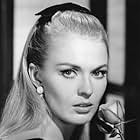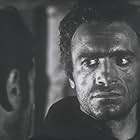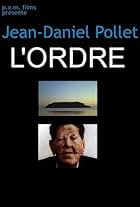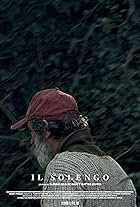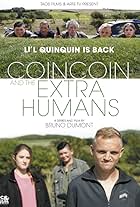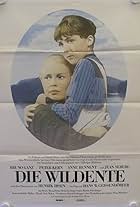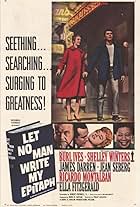Aggiungi una trama nella tua linguaJoyce is alone in her luxurious apartment in Morocco, trying to cool down during a heat wave but also suffering from anxiety and sexual frustration. She holds a party, goes to the beach, and... Leggi tuttoJoyce is alone in her luxurious apartment in Morocco, trying to cool down during a heat wave but also suffering from anxiety and sexual frustration. She holds a party, goes to the beach, and meets her physician. But where's her husband?Joyce is alone in her luxurious apartment in Morocco, trying to cool down during a heat wave but also suffering from anxiety and sexual frustration. She holds a party, goes to the beach, and meets her physician. But where's her husband?
- Premi
- 1 vittoria
Foto
Trama
Lo sapevi?
- QuizWon the Golden Shell at the San Sebastián International Film Festival in 1970. It is the only giallo film to ever win the award.
- Colonne sonoreCrimson and Clover
Written by Tommy James (uncredited) and Peter P. Lucia Jr. (uncredited)
Performed by Tommy James & The Shondells
Recensione in evidenza
DEAD OF SUMMER epitomizes the hundreds of forgotten "in-between" European films of the late '60s/early '70s. It failed to make an indelible mark in its initial run, and is not sale-able in today's genre film-dominated video market. So it's gone and not even missed.
Director Nelo Risi, brother of the all-time genius Dino Risi, had an unsuccessful career, having cranked out several interesting but extremely pretentious films before losing his backing. I'm anxious to see his bete noir A SEASON IN HELL about Rimbaud & Verlaine (made before Leo DiCaprio was born), a big-deal project backed by United Artists but permanently shelved.
For DEAD OF SUMMER, which is also known appropriately as HEAT WAVE, Nelo is under the spell of Antonioni, with an emphasis on architecture and bleak vistas that would do the maestro proud. He has cast the iconic American in Europe actress Jean Seberg in what amounts to almost a one-woman-show, starring as Joyce Grassi, wife of an architect who is absent but whose presence hovers as a black & white blowup in their modern bi-level apartment.
Setting is Morocco, though with the entire cast speaking in Italian I thought it might be Ethiopia or Libya, amongst Italy's former colonies. Colonialism is certainly a key theme here, as Joyce interacts with her attractive maidservant (Lilia Nguyen, who looks Abyssinian despite her ?married? Vietnamese surname) or a pesky young guy who keeps trying to sell her stuff, door-to-door. The only other significant role is her physician Vittorio, played in surprisingly neutral fashion by usually sinister character actor Luigi Pistilli.
Taking the classic Cocteau piece "The Human Voice" as his starting point, Risi fixates on Seberg acting in one for the first 35 minutes of the movie. With the air conditioning on the blink, she's sweltering all alone in her lavish apartment, a modular affair that reminded me of the innovative sets Jerry Lewis pioneered when he turned director in the '60s. For her fans she delivers a couple of nude scenes which, as they say, are integral to the story.
As in Antonioni's cinema, the action becomes more & more abstract, with Seberg venturing outside into the scirocco-like wind and dust to drive her nifty white sports convertible to the beach and see her doctor off at the airport. After a suicide attempt she has Vittorio check her into a clinic, but there's only a tiny foreshadowing of the shock ending.
Throughout the film, Risi emphasizes the media via television broadcasts and Joyce's main form of communication is her tape recorder, playing back hubby's statements and later proving to be a key plot device. The fact that the film is carried by her physical acting and the strikingly claustrophobic Techniscope visuals means that no subtitles are really necessary for the integral Italian version now extant. I've been searching in vain for the English-track version released Stateside nearly 40 years ago by defunct Plaza Pictures, which would feature Jean's own post-synched voice, and suspect it is lost.
Remarkably beautiful and glamorous, with slightly longer hair than in her most famous roles, Seberg is terrific as the mysterious central figure. We don't really find out much about her character, languorously listening to the hit "Crimson & Clover" on the radio at one point. Having waited so long to see this nearly-lost film, I felt an odd inversion here, especially during the nude scenes, when Jean looked so uncannily like her direct screen successor, Mimsy Farmer. At any rate, had Nelo made this film several years later he would undoubtedly have cast Mimsy, as she had become the darling of both experimental and genre filmmakers all over Europe, and a near-doppelganger for Jean, haircut and all. I saw Jean's final great role, in Geissendorfer's THE WILD DUCK, back in the day in first-run, and regret her prematurely shortened career.
The overall mood of DEAD OF SUMMER suggested to me that created by J.G. Ballard in perhaps his greatest later book "Vermilion Sands", certainly the post-Colonial mood of indolence and decadence. If Risi had made the film as sci-fi instead of the unclassifiable work it is, it might have found video circulation as a cult classic, not unlike the screwy but haunting FOOTPRINTS ON THE MOON from this same period.
Director Nelo Risi, brother of the all-time genius Dino Risi, had an unsuccessful career, having cranked out several interesting but extremely pretentious films before losing his backing. I'm anxious to see his bete noir A SEASON IN HELL about Rimbaud & Verlaine (made before Leo DiCaprio was born), a big-deal project backed by United Artists but permanently shelved.
For DEAD OF SUMMER, which is also known appropriately as HEAT WAVE, Nelo is under the spell of Antonioni, with an emphasis on architecture and bleak vistas that would do the maestro proud. He has cast the iconic American in Europe actress Jean Seberg in what amounts to almost a one-woman-show, starring as Joyce Grassi, wife of an architect who is absent but whose presence hovers as a black & white blowup in their modern bi-level apartment.
Setting is Morocco, though with the entire cast speaking in Italian I thought it might be Ethiopia or Libya, amongst Italy's former colonies. Colonialism is certainly a key theme here, as Joyce interacts with her attractive maidservant (Lilia Nguyen, who looks Abyssinian despite her ?married? Vietnamese surname) or a pesky young guy who keeps trying to sell her stuff, door-to-door. The only other significant role is her physician Vittorio, played in surprisingly neutral fashion by usually sinister character actor Luigi Pistilli.
Taking the classic Cocteau piece "The Human Voice" as his starting point, Risi fixates on Seberg acting in one for the first 35 minutes of the movie. With the air conditioning on the blink, she's sweltering all alone in her lavish apartment, a modular affair that reminded me of the innovative sets Jerry Lewis pioneered when he turned director in the '60s. For her fans she delivers a couple of nude scenes which, as they say, are integral to the story.
As in Antonioni's cinema, the action becomes more & more abstract, with Seberg venturing outside into the scirocco-like wind and dust to drive her nifty white sports convertible to the beach and see her doctor off at the airport. After a suicide attempt she has Vittorio check her into a clinic, but there's only a tiny foreshadowing of the shock ending.
Throughout the film, Risi emphasizes the media via television broadcasts and Joyce's main form of communication is her tape recorder, playing back hubby's statements and later proving to be a key plot device. The fact that the film is carried by her physical acting and the strikingly claustrophobic Techniscope visuals means that no subtitles are really necessary for the integral Italian version now extant. I've been searching in vain for the English-track version released Stateside nearly 40 years ago by defunct Plaza Pictures, which would feature Jean's own post-synched voice, and suspect it is lost.
Remarkably beautiful and glamorous, with slightly longer hair than in her most famous roles, Seberg is terrific as the mysterious central figure. We don't really find out much about her character, languorously listening to the hit "Crimson & Clover" on the radio at one point. Having waited so long to see this nearly-lost film, I felt an odd inversion here, especially during the nude scenes, when Jean looked so uncannily like her direct screen successor, Mimsy Farmer. At any rate, had Nelo made this film several years later he would undoubtedly have cast Mimsy, as she had become the darling of both experimental and genre filmmakers all over Europe, and a near-doppelganger for Jean, haircut and all. I saw Jean's final great role, in Geissendorfer's THE WILD DUCK, back in the day in first-run, and regret her prematurely shortened career.
The overall mood of DEAD OF SUMMER suggested to me that created by J.G. Ballard in perhaps his greatest later book "Vermilion Sands", certainly the post-Colonial mood of indolence and decadence. If Risi had made the film as sci-fi instead of the unclassifiable work it is, it might have found video circulation as a cult classic, not unlike the screwy but haunting FOOTPRINTS ON THE MOON from this same period.
I più visti
Accedi per valutare e creare un elenco di titoli salvati per ottenere consigli personalizzati
Dettagli
- Tempo di esecuzione1 ora 45 minuti
- Mix di suoni
- Proporzioni
- 2.35 : 1
Contribuisci a questa pagina
Suggerisci una modifica o aggiungi i contenuti mancanti

Divario superiore
By what name was Ondata di calore (1970) officially released in Canada in English?
Rispondi


